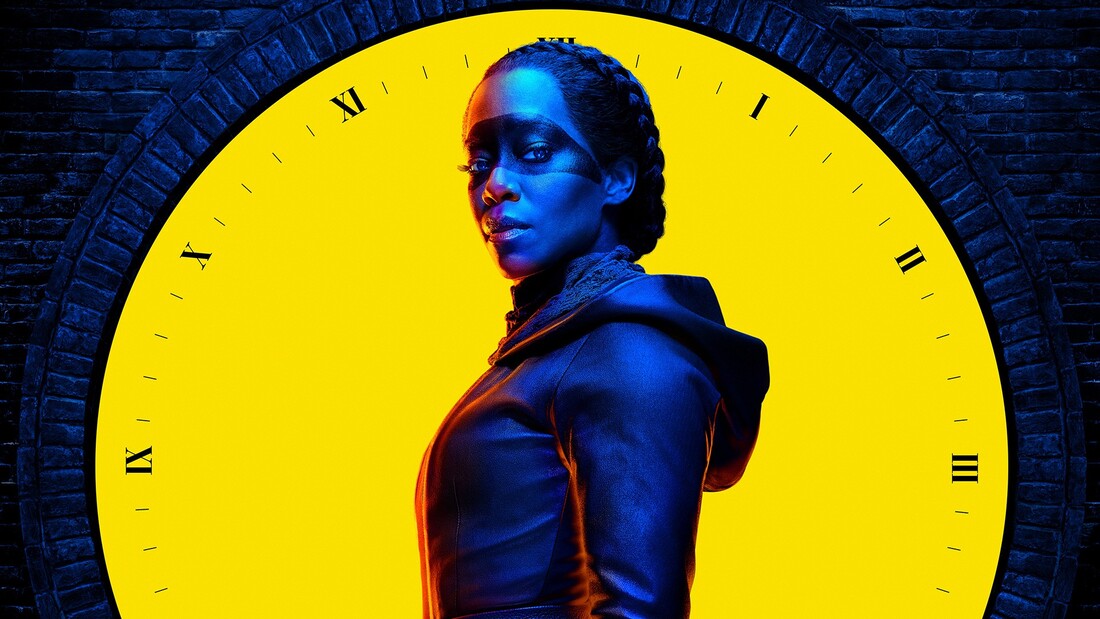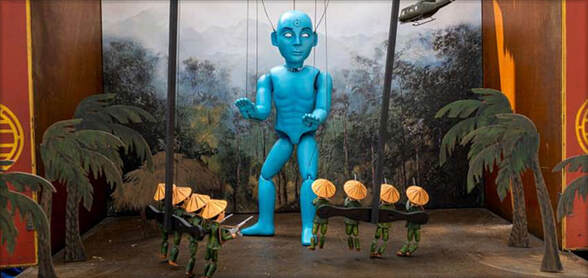HBO's Watchmen follows Angela Abar (Regina King), a police officer working under the alias Sister Night, as police officers in Tulsa Oklahoma wear masks and alter egos for safety reasons. The story is set into motion after the murder of Tulsa’s chief of police (Don Johnson). Angela, in her attempts to find out the truth over who murdered the chief of police, is pulled into a plot far bigger than she could have ever imagined.
Like the comic book before it, Watchmen is structured with a mystery framing device that allows for deeper character studies of the characters engaged in the plot. The same goes for Lindelof’s Watchmen. While the mystery develops slowly in each episode, it is seldom the primary focus. Rather, the focus goes to its cast of characters, such as Angela Abar, Adrian Veidt, aka Ozymandias (Jeremy Irons), Looking Glass (Tim Blake Nelson), Lorrie Blake (Jean Smart), and many more. But the structural similarities don't stop there. The structures of many of the episodes also share similarities to structures of individual issues of the comics. The most glaring being the episode “A God Walks into Abar”, borrowing the nonlinear structure of issue four of the Moore and Gibbons’ Watchmen, “Watchmaker”, as it replicates the nonlinearity of Dr. Manhattan’s perception of time. The purpose in both the comic and the TV show is to focus more on character than plot.
Another aspect Lindeloff takes from the comic is the use of recurring symbols. While Lindelof and the other writers of the show do make use of these symbols, they find new spins on those symbols. There is a reference to the iconic smiley face button from the original comic twice in the first episode, “It’s Summer and We’re Running Out of Ice”. First, is a smiley face made of egg yolks. The second, when Captain Jud Crawford’s police badge gets blood dripped on it, a direct homage to the smiley face button of the Comedian, cementing the idea that Crawford is the Comedian of the TV show; the inciting incident that puts the story into motion. Another major recurring symbol from the comic is the use of clocks. Where a comic can visually show a clock, the show can use audio to indicate a clock. The ticking of a clock is referenced both in a message sent by the Seventh Kavalry in the video below and in the score composed by Trent Reznor and Atticus Ross. There is even a massive clock tower erected that plays a major role in the finale. The clock shares its meaning with the comic as it adds tension, especially through the common phrase, “tick-tock” that many characters say. The most common element of the clock motif between both the show and the comic is the counting down element. In the comic, it is counting down to nuclear destruction, where in the show, it points to a sort of racial reckoning that the Seventh Kavalry is attempting to enact due to a bill passed that pays reparations to minorities who have suffered from past injustices.
Alternate history is another aspect of the Watchmen comic book series that he picks up and runs with. The biggest alternate history element that the TV show expands on involves Dr. Manhattan (Yahya Abdul Mateen II). As the only superpowered superhero in the world, he won the Vietnam War for the United States, making Vietnam a state. The show, like its comic book predecessor, explores the ramifications of superheroes in the real world. While the comic focuses on the Cold War and the potential of nuclear disaster, the show focuses on race and trauma, as stated in the third episode of The Official Watchmen Podcast (2019). Angela was raised in Vietnam, was born from two African Americans. In the first episode, she is seen wearing a Vietnamese outfit for a class presentation and in the pilot episode. Lindelof, on episode 1 of the Official Watchmen Podcast (2019), he compares Vietnam to Hawaii and how it is inspired by the colonial tendencies in America's past. We also see how politics have evolved since the original Watchmen, revealing that while superheroes are still illegal, cops are now allowed to wear masks to protect their identities due to a mass attack on the police in their own homes.
HBO’s sequel series demonstrates a deep understanding of the source material from a construction standpoint while also not doing a repeat of the story of Watchmen. They take the story told in the original comic book series and found a way to not just build on top of the world that was established, but create their own path forward with their own twists and developments with both brand new characters and the characters from the original story in the comics. Even when rewatching episodes for the sake of this analysis, more layers that either point back to the comic or bits of foreshadowing were unearthed. By bringing in new characters, themes, and symbols to an established world and familiar archetypes, HBO’s Watchmen succeeds in creating a worthy follow up to the original comic.
Works Cited
HBO. “Episode 1.” The Official Watchmen Podcast, November 3, 2019. https://www.youtube.com/watch?v=oiN5pR0nS80
HBO. “Episode 2.” The Official Watchmen Podcast, November 24, 2019. https://www.youtube.com/watch?v=G0RRDM_R8NY
HBO. “Episode 3.” The Official Watchmen Podcast, December 15, 2019. https://www.youtube.com/watch?v=QDe3iL052v0
Lindelof, Damon creator. Watchmen. HBO, 2019.
Moore, Alan, and Dave Gibbons. Absolute Watchmen. DC Comics, 2011.



 RSS Feed
RSS Feed
